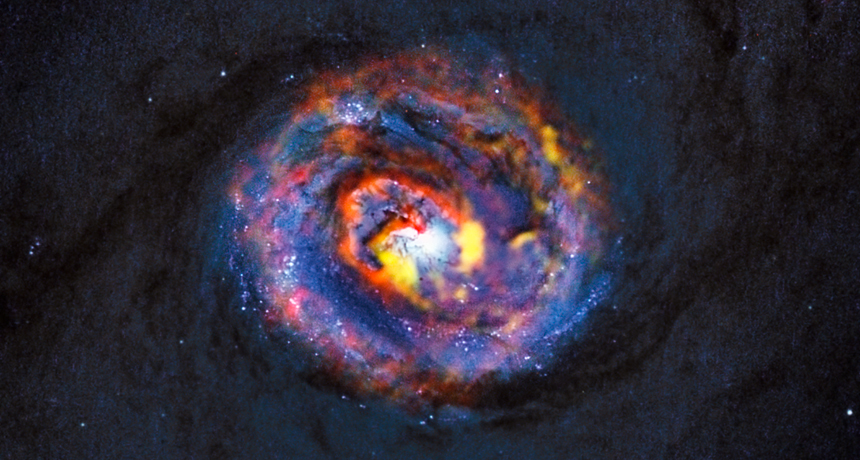Galaxy’s gas molecules reveal its structure
Carbon monoxide seen flowing both toward and away from central black hole

GALAXY’S CORE This composite image from ALMA and the Hubble Space Telescope shows the distribution of gas (yellow and orange) and dust (blue) that form a spiral structure close to the supermassive black hole at the center of galaxy NGC 1433.
ALMA (ESO, NAOJ, NRAO), NASA, ESA, F. Combes






